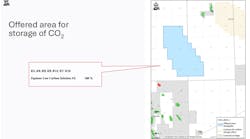Chris Rowson
WesternGeco
Since the break-up of the Soviet Union in 1991, the Caspian Sea and the surroun-ding region's huge reserves have made the region the focus of international attention. The main challenges for oil companies operating in this part of the world are selecting, introducing, and applying modern exploration and production technologies.
The Caspian Sea contains six separate identified hydrocarbon basins, but only a small proportion of its hydrocarbon resources has been developed.
null
According to some industry experts, oil production from the Caspian Sea region could exceed 6.5 MMbbl/d by 2020, which would make the region's hydrocarbon potential comparable to that of the North Sea.
In recent years, Azerbaijan, Kazakhstan, Turkmenistan, and Russia have made rapid progress in exploring and developing their offshore oil reserves. Azerbaijan has signed a number of production sharing agreements (PSAs) that will help it to gear up its oil and natural gas industries to cope with future expansion and increased production. Kazakhstan has also invited foreign companies to assist in the development of its oil and gas resources. The international oil projects in Kazakhstan have taken the form of joint ventures, PSAs, and exploration/ field concessions. Turkmenistan is the focus of increased offshore exploration by foreign oil companies, and this is a key element in the government's decade-long program to raise oil production to nearly 1 MMbbl/d by 2010. Russian has also made significant discoveries in the Caspian Sea and has signed agreements to ex-plore the central part of the northern Caspian Sea.
The Caspian region contains 10 Bbbl of proven oil reserves. In addition, despite disappointing drilling results, the region's possible oil reserves could yield another 233 Bbbl of oil.
Modern exploration methods will play a key role in the development of new Caspian fields. In the early 1990s, oil production in the region fell dramatically. This collapse reflected historical under-investment in technology and infrastructure. The industry has recovered through increased international investment and the introduction of modern E&P methods.
Geophysical surveys will, naturally, play a pivotal role in exploration and field development. Caspian Geophysical, a joint venture between WesternGeco and the State Oil Co. of Azerbaijan Republic, has completed the first multicomponent (4C) 3D seismic survey in the Caspian Sea. The WesternGeco 4C group at Gatwick in the UK is processing the data set. The survey was commissioned to help improve subsurface imaging to improve drilling accuracy and reduce drilling time. This should allow oil companies to bring the field into production earlier and to reduce the overall oilfield cycle.
4C solutions
Ocean-bottom 4C seismic acquisition allows both conventional P-wave and mode-converted shear-wave (S-wave) energy to be recorded on the seabed to improve the imaging and the characterization of the subsurface, such as in the South Caspian basin, where mud volcanoes have previously been difficult to image. Seabed 4C surveys require careful positioning of the cables that contain the four component sensors (X, Y, Z, and pressure). This seabed placement is achieved using specialized equipment and close coordination between a seismic source vessel and a recording vessel with dynamic positioning capability. Before the survey, a reconnaissance side-scan sonar investigation covers all potential seismic receiver line locations.
When the reconnaissance operation has been completed, the seismic cables are deployed over the stern of the recording vessel as it moves along pre-plotted receiver lines. Positional data from transponders is continuously acquired during the deployment of each cable. When the first cable is in position, the forward end is buoyed off to allow the vessel to start deploying the second.
null
After the second cable has been fully deployed, the lead-in of the first cable is picked up again, so that data from both cables can be recorded. The recording vessel then deploys more lead-in cable to allow greater movement of the vessel without dragging the front end of the cables. This allows the recording vessel to position itself a safe distance from the passing source vessel.
Once the source vessel has shot the swath of data, the recording vessel can begin the recovery phase and re-deployment of the cable for the next swath. The position of the cable is monitored at all times to ensure accuracy.
The 4C data undergoes a quality control procedure to ensure 4C integrity.
The deployment of modern 4C seismic technology in the Caspian Sea region indicates how important this area has become for the international energy market. Overall, oil production in the region reached 1.3 MMbbl/d in 2001. This is expected to increase dramatically over the next five years. As companies extend their exploration operations into new parts of the region, modern geophysical techniques will guide their efforts and safeguard their investments. ;





